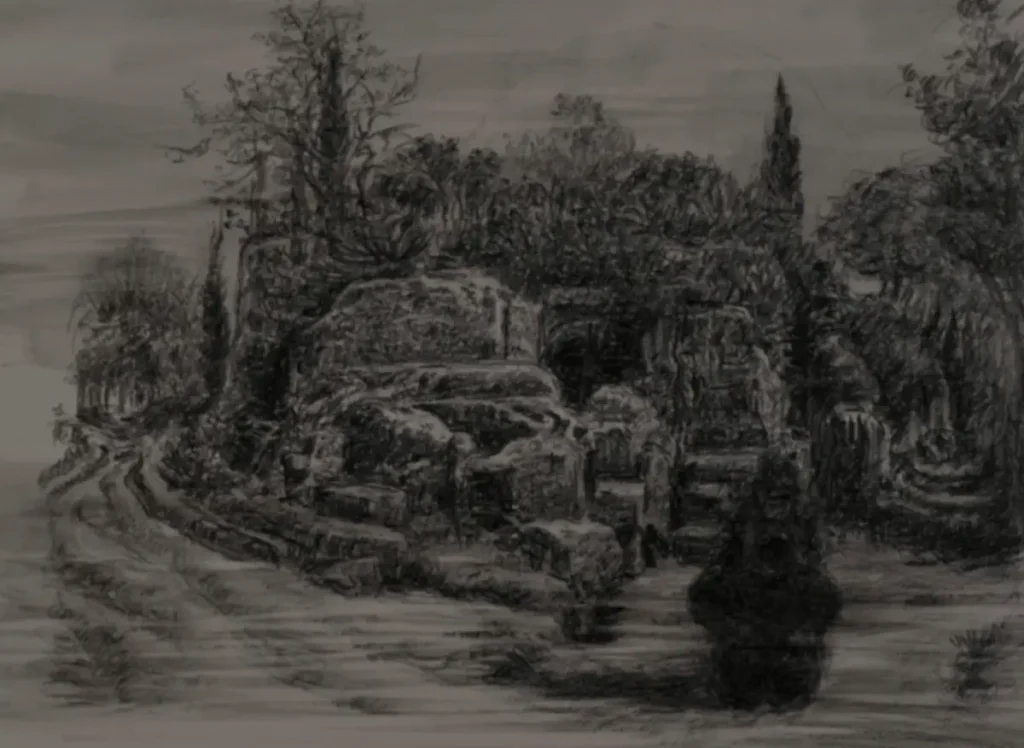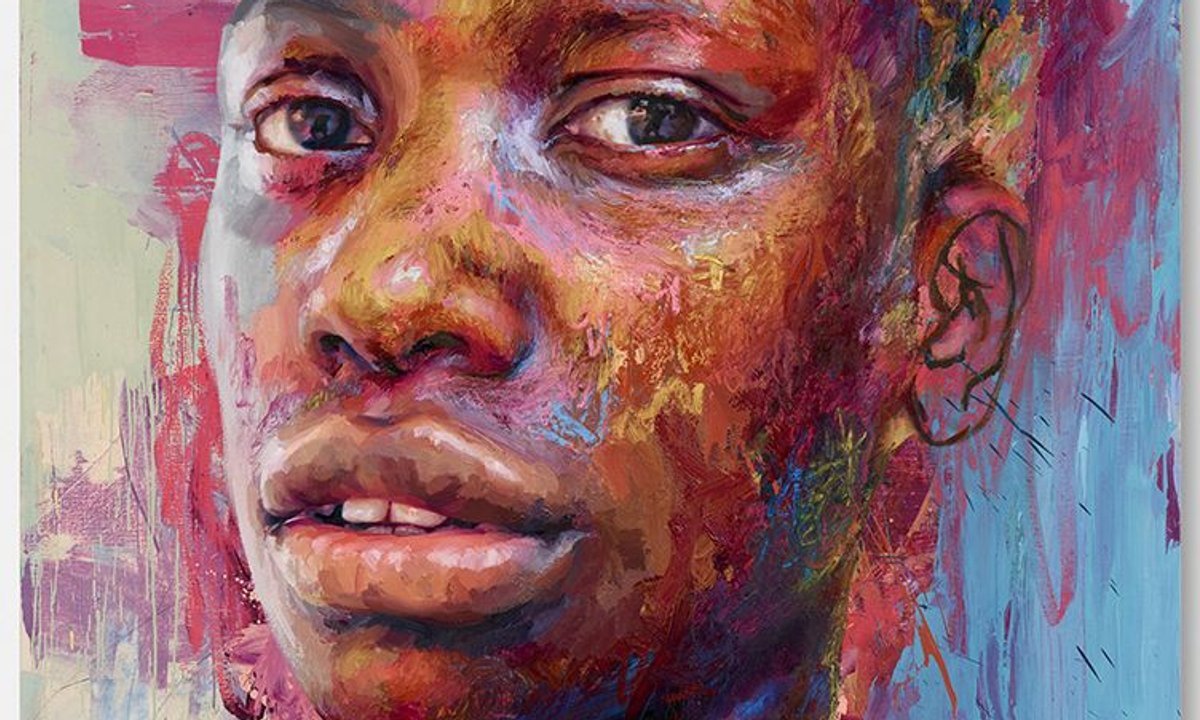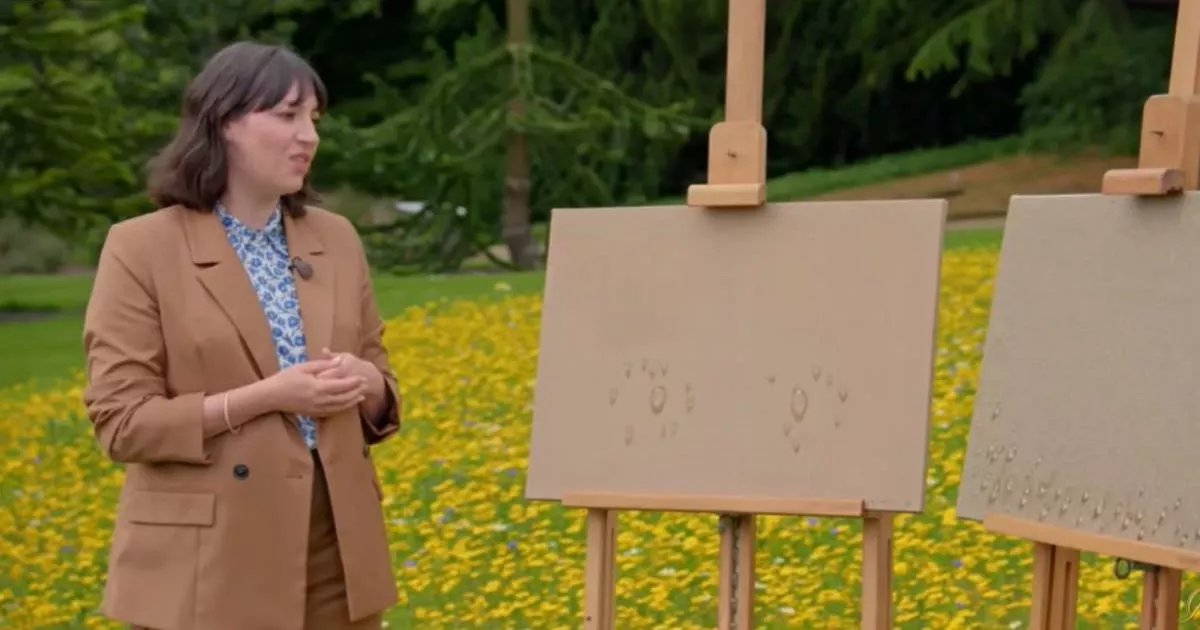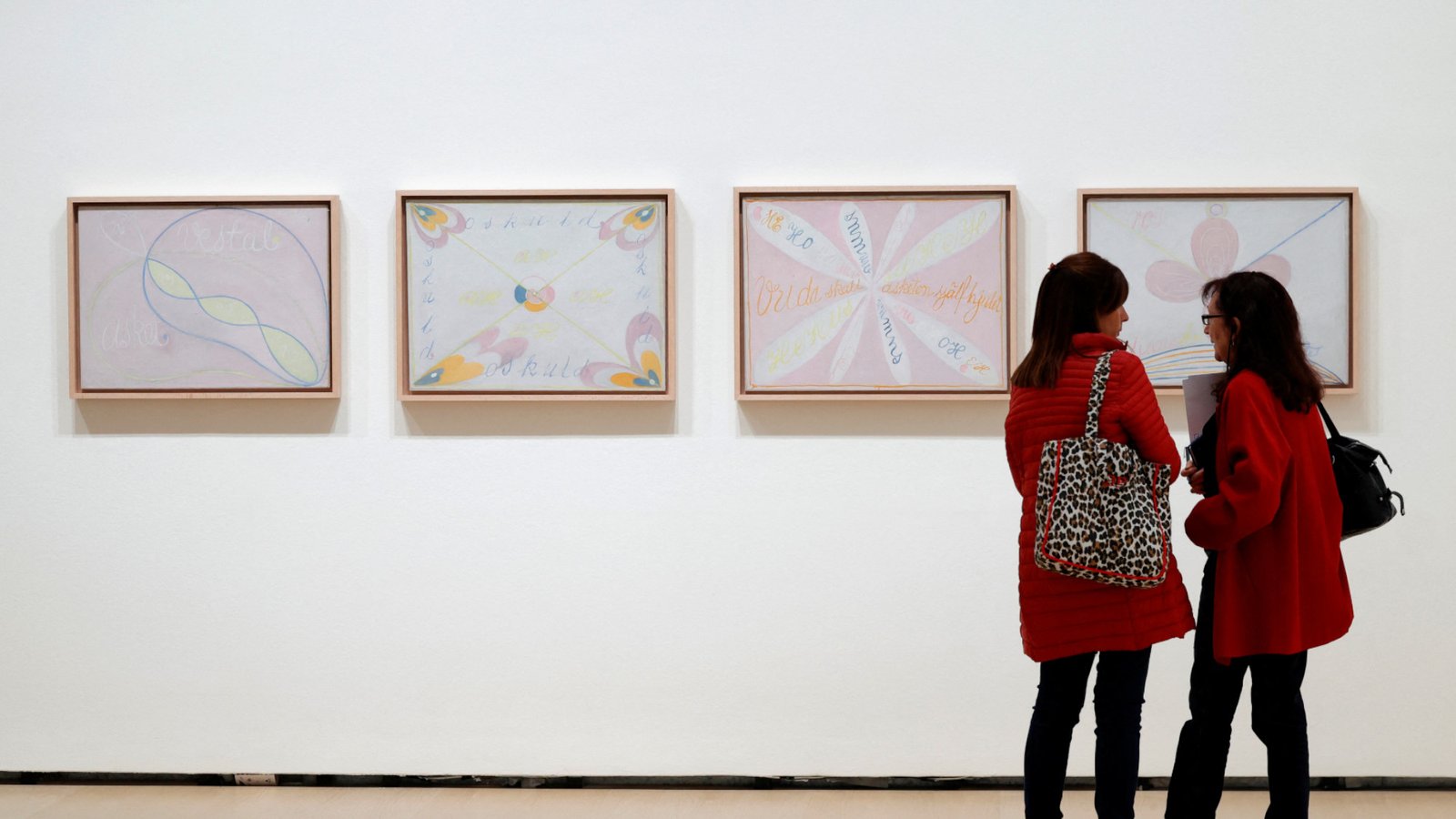In the previous series, the works depicted a scenario where “we” were told by a rabbit, “This is a kotatsu for the dead. You cannot enter here because you don’t have a body. Leave quickly!” As “we” wandered around, the works portrayed the transition into the world of the dead, transcending space and time. However, in this exhibition, scenes of entering the Necropolis, the city of the dead, are depicted from the beginning.
According to Nagasawa, memories of the Necropolis in Tarquinia, Italy, which he had visited several times before, resurfaced along with memories of the wars in Ukraine and Gaza. Just as the previous exhibition responded to the riddle posed by COVID-19, this time, war and death are reflected in the artworks as enigmatic elements.
The works displayed in this exhibition frequently incorporate descriptions and motifs related to the dead, with stones being prominently featured. Actual stones are also planned to be exhibited. The presence of the dead is thus a major theme, as indicated by the statement, “…the dead and stones are equal,” and the notion that “the most remarkable thing is when the dead are together with the living” (C Communication 119-1).
Another significant theme addressed by Nagasawa is the concept of the “body.” This does not simply refer to a physical body but rather to the fading physicality in contemporary times, constantly observed from the perspective of the dead and questioned by stones, corals, and strata. The meaning of the “body” is reflected in Memory Island (Kiokushima), which “we” ultimately reach, as it is both an island of memory and a physical island.
As in the previous exhibition, no drawings made on paper are displayed. However, the matte paper with pigment ink exhibited as artwork, unlike the transparent images viewed on computers or smartphones, is clearly distinguished as a single body. For Nagasawa, this is the result of a fusion between the human hand (literally the body) and the hand of the device (another body). Additionally, the exhibited painting is related to the particles that constitute the world and is connected to the particles that make up stones. This serves as a response to the concept of diffraction grating (structural color) presented in the previous exhibition.
While Kazuhiro Yamamoto contributed to the previous exhibition, this time, the catalog has been completed with a contribution from Noi Sawaragi.






